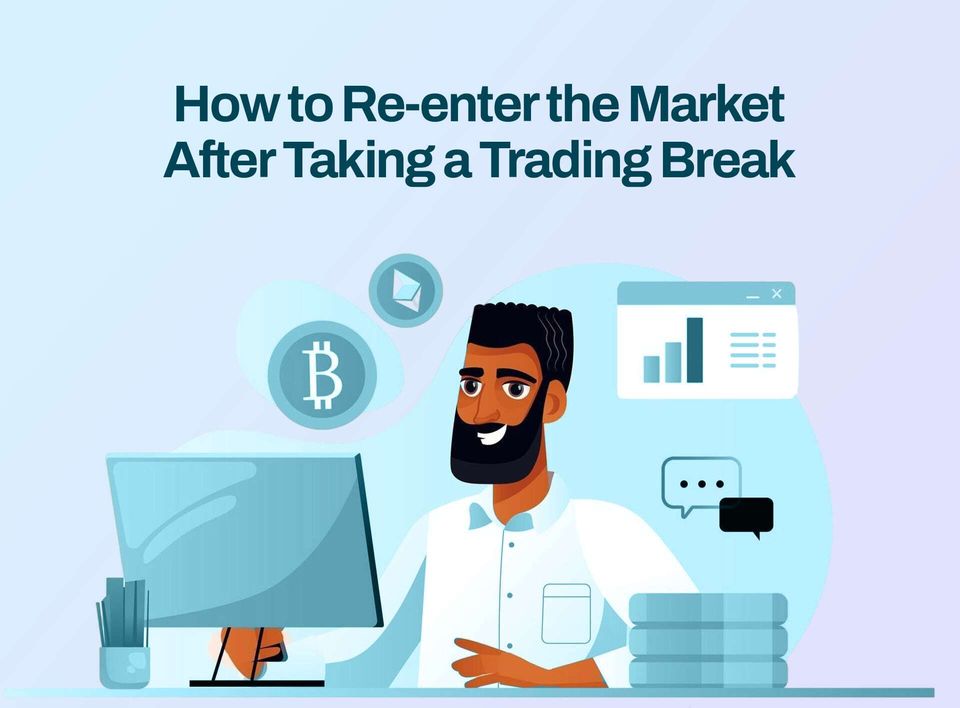Crypto Trading Strategies Explained For Beginners
Crypto trading is vast and exciting. Every trader has various strategies to choose from, some of which can be combined for better results.

Are you finally ready to begin trading crypto? Ready to take on the "investor" title? Well, you need to learn a few things about crypto trading.
The first is that there are different trading strategies, and you must understand them as much as possible. The information will help you pick the one that best suits you, considering your skill, time, goals, and available capital.
This article looks at the different trading strategies traders use to make huge profits. But before diving deep into it, keep the following points in mind.
● Trading strategies are a set of methods used in the course of buying and selling assets, whether it’s stocks or crypto.
● Trading can be active or passive.
Active Trading
Active trading refers to short-term buying and selling of crypto, mainly within a day. In active trading, the goal is to frequently monitor small price movements and maximize them to make a profit. The distinguishing factor between active and passive trading is the frequency of buying and selling.
Note that active trading differs from active investing. While it may make sense to say trading is “active” and investing is “passive”, it is nuanced. There aren’t absolutes as these strategies meld into each other sometimes.
Active investing involves monitoring the market over time and deciding which assets to hold, buy, or sell. It is not as long-term as passive investing. Think of it as a medium-term strategy.
Under active trading, there are five strategies you can choose from:
1. Day trading
2. Swing trading
3. Range trading
4. Position trading
5. Arbitrage
Day Trading
If you have ever seen a person at a cafe or restaurant peering all day at charts on their screen and laughing or exclaiming in pain, you've most likely met a day trader.
Day trading is a strategy that maximizes little price changes in the market during the day. Traders using this strategy usually give their trade an enormous period of time. They also have to put in substantial capital to make a reasonable profit from the little price changes.
In addition to the first two resources a day trader has to give to their trade (time and huge capital), they have to be able to read the charts correctly. Knowing how to interpret the charts is an essential resource for traders.
Under day trading, there are other strategies, and they are:
- Scalping
- High-frequency trading (HFT)
Scalping
There is no better example of a day trader than a scalping trader! Due to their trade speed, they should probably be tested for ADHD! These guys can carry out multiple trades in less than 5 minutes!
Scalping is a day trading strategy involving fast-paced trades within minutes. Those who do this are usually very savvy with charts and technical analysis. They do not believe in making huge profits. Instead, they prefer to make multiple little profits which accumulate to something substantial over time.
High-Frequency Trading
If you think scalping is quick, wait till you see how fast high-frequency trades are.
Like the name says, High-Frequency Trading or HFT is another day trading strategy that involves trading in a succession of seconds. You could also classify it as advanced scalping because of the time frame in which trades are made.
In reality, it is impossible for a human being to perform this type of trading; hence bots are used. These bots can detect price changes and trade accordingly in seconds!
Traders that employ scalping or high-frequency trading usually pay more attention to technical analysis because it looks at movements in prices over time. They may occasionally do some fundamental analysis to know which asset to scalp or day trade.
Swing Trading
If you have ever played on a swing, you know that there is a starting point from which you’re pushed and a height you get to before you drop right back to the resting position in successive movements.
Think of swing trading as the middle ground between day and long-term trading.
This type of trading strategy involves taking and holding a position for days or weeks, depending on how long it takes for the move to end.
On the market, prices move in waves. This means prices may rise quickly and stay on that path for a while. After a time, it falls back to a particular point known as the bottom or support. The highest point it reaches before crashing back down is known as the top or resistance point.
For example, if the bitcoin price on the market is $100 and it keeps fluctuating while steadily increasing; $105, $107, $110, $115, $120, $130. Then it stops moving for a while.
Swing traders would use technical analysis to know that $130 is the resistance point. But before it gets to that point, they may have deduced that $105 or $107 is their support point for this particular move. Thus they know when to hold and when to sell.
This may occur in days or weeks before the price reverts to a lower point, like $107 or $110.
Don't forget that this happens both in the mid-term and long-term. That's what differentiates trading from investing.
Traders hold positions for much longer in other forms of active trading, such as position trading, till a significant price move has occurred before they take action.
Another feature of swing trading is that it leans more on technical analysis.
Range Trading
Range trading can be a bit confusing because it is a strategy that can be adopted for long-term and short-term trading.
Range trading is similar to swing trading in that traders watch for fluctuations in price over time. But an asset can have a price range during the day or over the course of many days or even weeks. Therefore, it is challenging to categorize range trading into day or swing trading.
A simple definition of range trading would be that it involves maximizing the price fluctuations of assets on the market within a period of time.
This trading strategy is most effective when there is a range on the market. This range is brought about when high-profile holders either buy coins at a very high price (accumulation) or sell at a high price (distribution) to prepare for a new move or wave.
In range trading, there is a clear support and resistance point. There are stops put in place that prevent the trader from buying or selling outside the range. The trader is not concerned about the trend, be it an uptrend or downtrend. They only want to take advantage of the predictable price change within that short window. This makes it slightly less risky than other strategies.
Position trading
Position trading can be referred to as the short-term version of the HODL strategy in investing. It involves taking and holding a position for weeks and months.
Position traders are also called trend traders. They search for trends and find entry points until the trend reaches its highest point, and then they leave the position. This type of strategy does not focus on price movements.
In this type of trading, you will hear terms like lower lows and higher highs.
Trend traders typically take a position from either lower highs or lower lows and sell at higher highs or higher lows. It depends on the trend and whether the trader wants to buy or sell.
The market can be on a downward trend where you have lower lows and lower highs. Similarly, it can be on an upward trend, and this is where you have the higher highs and the higher lows.
Position traders buy at lower lows and sell at lower or higher highs. Depending on the trend, they then sell at higher or lower highs.
A downward trend is when prices generally decline from an all-time high and vice-versa. A bearish market is an example of a downward trend.
While position traders focus on trends and not price movements, they identify the best prices for entry and exit. This strategy relies substantially on a combination of both technical and fundamental analyses.
Arbitrage
This trading strategy may not be very popular, but it is a practice among some crypto investors. It involves buying crypto from one exchange and selling it to another at a much higher price. This can be done because crypto prices vary from exchange to exchange.
Arbitrage trading is done within minutes. The trader finds a crypto exchange selling at a particular price and one willing to buy at a higher price.
This is probably the only strategy that does not involve any risk. The profit may be minimal, but it can accumulate substantially over time. You can classify arbitrage as a type of day trading strategy.
Final Word
Crypto trading is vast and exciting. Every trader has various strategies to choose from, some of which can be combined for better results.
Active trading strategies typically amass more wealth than active or passive investing. Before you pick a strategy, analyze your strengths, available time, and capital. Trading crypto can be risky, but everything worth anything involves a measure of risk.
Disclaimer: This article was written to provide guidance and understanding. It is not an exhaustive article and should not be taken as financial advice. Obiex will not be held liable for your investment decisions.




